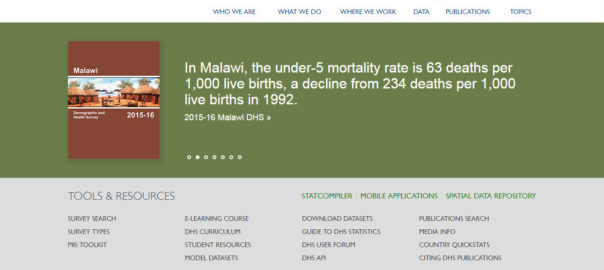How Things Have Changed! Looking Back at Data Distribution Practices from 20 Years Ago

A lot can change in 20 years. For The DHS Program, it’s the difference between over 250 datasets for 70 separate surveys to more than 10,000 datasets from over 300 surveys. The contents of the model survey questionnaires changed radically, as did the media used for data distribution. And two decades ago, the internet had only recently emerged as a potential means of communication around the world!
It might be hard to imagine life without internet access today – for us, we rely on the internet for many of our activities. In 1995, The DHS Program established a website which had the basics: an informational brochure, survey statuses, fact sheets, press releases, and newsletters.
Though the website has been updated several times since then, it still has these basic features. The crucial difference lies in how we only provided an archive of publications and data and information on how to place an order for them. Yes, users had to pay for the cost of media – which, at the time, included diskettes (AKA a floppy disk), Bernoulli cartridges, and CD-ROMS – and shipping. At one point, we were deciding on whether to charge for the data itself, to ensure the fullest use of the data.
That decision was part of a proposal from 20 years ago, which proposed the following data dissemination over the internet:
- DHS data
- India NFHS data
- Report text
- Online newsletter (tentatively named ‘DHS Discoveries’)
- User forum
These look familiar, don’t they? Today, both reports and datasets are free and available over the internet for download (though we still require users to apply for access to datasets), we email our newsletter to subscribers (which includes news, new publications and datasets, and articles that have cited DHS data), and the User Forum has been live since February 2013.
The DHS Program has utilized the internet beyond what was proposed 20 years ago; to name only a few ways, the creations of STATcompiler, development of eLearning courses for data visualization and social media for global health, and utilization of social media to engage with our users. And if you want to know what is coming next, be sure to Follow or Like us on social media, subscribe to our newsletter or even this very blog – you are just a few clicks away!
This blog post is based on the rediscovery of the paper prepared for the Population Association of America (PAA) meeting back in 1996. Go back in time and read the original paper here!

